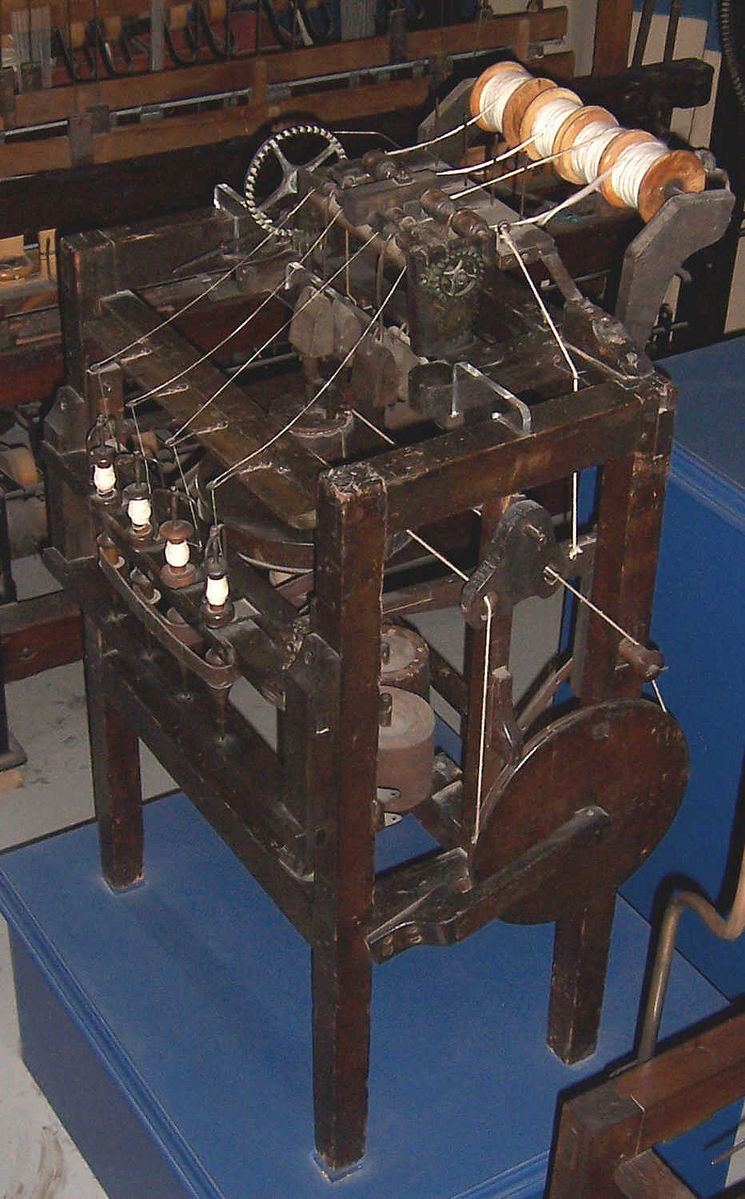Name John Kay | Role Inventor | |
 | ||
John kay flying shuttle
John Kay was a clockmaker from Warrington, Lancashire, England, associated with the scandal surrounding invention of the spinning frame in 1767, an important stage in the development of textile manufacturing in the Industrial Revolution. Kay constructed the first known frame, and is one of the claimants to having been its inventor. He is sometimes confused with the unrelated John Kay who had invented the flying shuttle thirty years earlier.
Contents
- John kay flying shuttle
- John Kay and Thomas Highs
- John Kay and Richard Arkwright
- Later developments
- References
John Kay and Thomas Highs
In 1763, Kay was a married clockmaker in Leigh. His neighbour, Thomas Highs, was an inventor, and the two collaborated in textile-machinery experiments. Exactly what technologies, and contributions the two men worked on then became the subject of several controversial court cases, but among other things, Kay and Highs probably investigated textile-spinning by means of rollers.
(By 1763 weaving had been greatly automated, but spinning was still done by hand wheel. Research into using mechanical rollers to replace hand spinning had started in the first half of the century; Lewis Paul had the first model in 1738, but further development was needed to make it profitable.)
Though they made many trial machines, these three years of research were limited by their lack of capital, and they were unable to perfect any designs.
John Kay and Richard Arkwright
In 1767, Richard Arkwright (wig-dealer and entrepreneur) engaged Kay's clockmaking skills in the construction of brass wheels (ostensibly for a "perpetual motion machine"). Six months later, after Kay had moved back to Warrington, Arkwright persuaded him to make a roller-based spinning-machine. Kay built a model machine for Arkwright in 1767 which became the fore-runner of the useful technology.
(Following the patent trials of the 1780s, it was variously claimed that: Arkwright had envisaged the design before meeting Kay, that Kay had stolen High's ideas, or that Kay conceived the machine as well as building it.)
After Kay's prototype convinced Arkwright of its feasibility, they moved to a secluded room in Preston, where Kay improved the technology through 1768, claiming to be developing a longitude machine. The secrecy and humming noises emanating from their experimental parlour led to accusations of witchcraft. Although Arkwright was not rich, he took Kay to Preston as a "servant", according to the transcript of the 25 June 1785 patent trial, and Kay gave his bond to serve Arkwright for twenty-one years and to keep their methods secret.
They relocated to Nottingham, and in 1769 constructed the first working mill to use the new machine. Arkwright patented the machine in 1769, without mentioning Kay, his "workman". Through another Nottingham inventor, James Hargreaves, Kay learned of this patent, and told Hargreaves that it was he, Kay, who was its true inventor. Arkwright accused Kay of leaking its design to Hargreaves, and the two fell out; Kay accused Arkwright of stealing his work tools, and Arkwright filed a counter-charge. In the end, Kay fled Arkwright's Nottingham house (where he lived at the time) – permanently dissolving their relationship.
Later developments
The original spinning mill they constructed in Nottingham in 1769 was powered by horses, an expense making the operation unprofitable. But the concept was proven, allowing Arkright to gather investors, and construct a more elaborate water-powered mill. That mill (built in Cromford 1771) powered its "spinning frame" economically from the Derwent – making it the "water frame". It revolutionised the industry and made Arkwright and partners – but not Kay – wealthy men.
In 1781, Arkwright went to court to protect his patent rights (against infringers). Four years later (in a long-running court battle) Highs, Kay and Kay's wife (Sarah) all testified that Arkwright had stolen High's invention of the rollers "by the medium of Mr Kay". Because of his own testimony, and because he had fled his bond with Arkwright under a felony charge, the character and veracity of John Kay were questioned during the trial. But the judge did not require that the jury be convinced of the intellectual property theft; he instructed them to set Arkwright's patent aside (even if they thought he was its inventor) if they believed that it was insufficiently novel, or that he had failed to adequately describe it in his patent. The jury immediately found against Arkwright (a popular verdict) but no rights were ever transferred to Highs or Kay.
